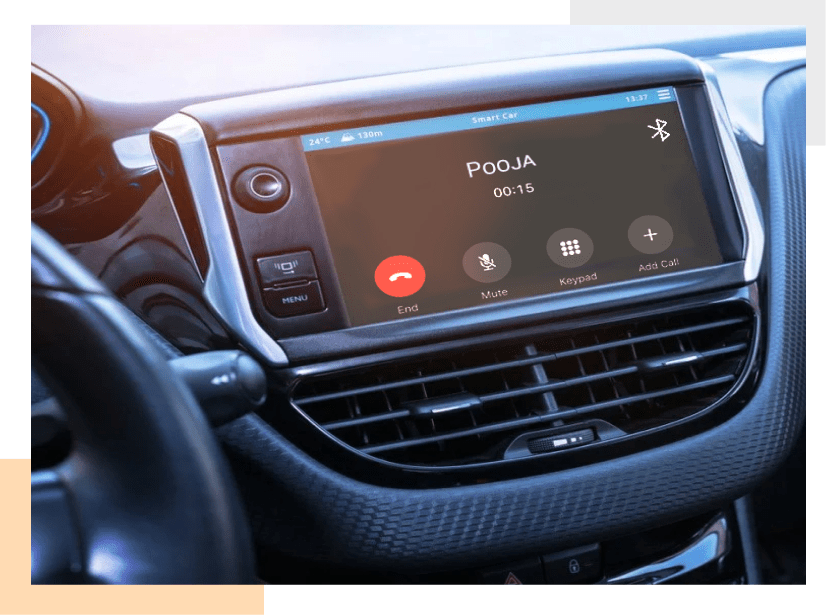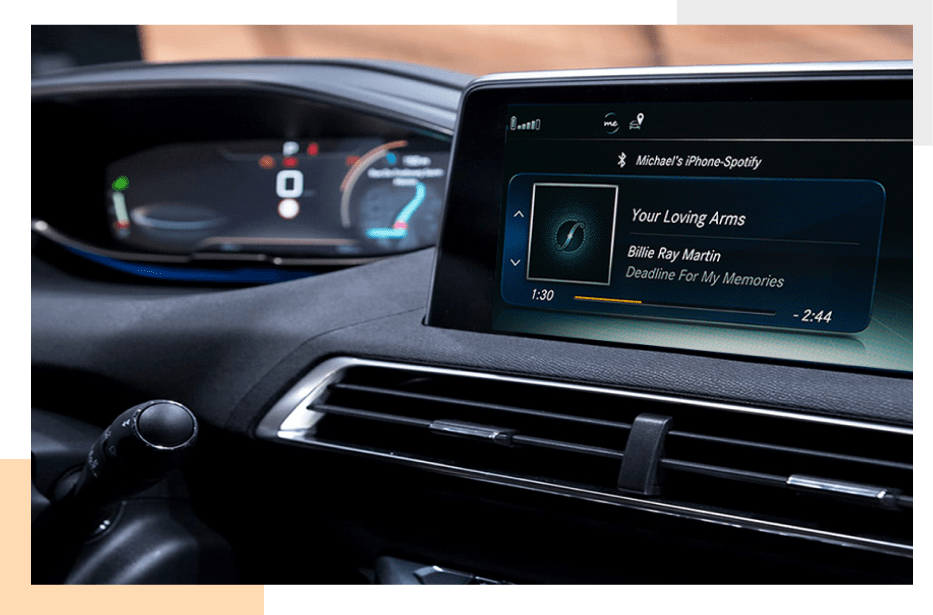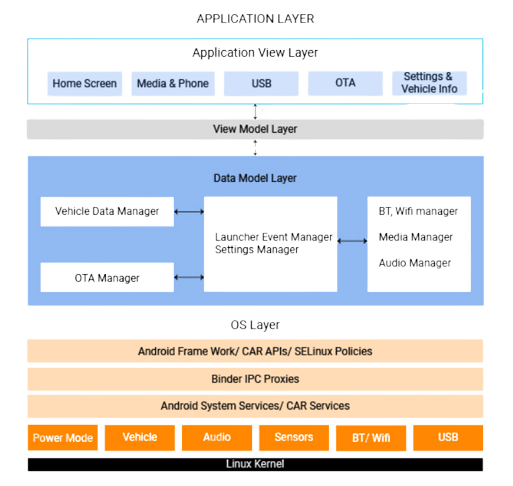Bluetooth Micro Stack for Automotive Smart Cluster and Digital Cockpit
Two versions of Bluetooth technology are used in automotive applications – Bluetooth Classic and Bluetooth Low Energy (BLE). The Classic version ensures steady and high-quality transmission rate and hence, facilitates exchange of large files. On the other hand, BLE is most suitable for applications that exchange small amounts of data, while ensuring low power consumption.
Our IoT engineering team has developed a ready-to-deploy Bluetooth Classic micro stack that can be integrated with smart clusters, infotainment systems or digital cockpits. This stack is available to customers on a one-time licensing fee model. As per this business model, the customer jointly owns the IP rights of the software as well as the source code of the stack. They may deploy and integrate the Bluetooth stack across multiple projects.
How Does the Bluetooth Micro Stack Work?

1. Hands-free Calling
Message alerts and incoming calls to the user’s mobile phone can be displayed on the dashboard/infotainment screen. Phone book synching is also done.
- Through the number keypad on the IVI system, the user can make outgoing calls by dialing specific numbers. These calls will be routed through the mobile phone.
- Incoming calls can be accepted or disconnected using the infotainment screen or the mobile screen.
- Hardkeys are included in the design to enable making quick calls to frequently used/important phone numbers.
Hands-free calling is implemented using the PBAP (Phone Book Access Profile) and HFP (Hands Free Profile) Bluetooth profiles.
Points to note:
- The Bluetooth micro stack enables reduction in implementation time for Bluetooth general settings by almost 25%.
- Similarly, phone book syncing usually takes 10 days to develop from scratch. It can be done in 5 days with this stack.
- Additionally, when developing a hands-free calling module for two-wheelers from scratch, it takes around 15 days to implement phone call accept and reject features. Implementation of our Bluetooth micro stack enables these features in 8 days.
- Message alerts implementation generally takes 12 days. It can be done in 6 days using the Bluetooth micro stack
2. Bluetooth Audio
Once the Bluetooth pairing is successful, songs that are played on the phone can be displayed on the infotainment system as well. Playback and pause controls will be available from the IVI screen.
Bluetooth Audio is implemented using A2DP (Advanced Audio Distribution Profile) and AVRCP (Audio/Video Remote Control Profile).

Points to note:
- When organisations develop the Bluetooth Audio feature from scratch, the development takes at least 40 days for completion. Our Bluetooth micro stack reduces these timelines considerably, and this feature can be implemented within 2 weeks.
Smart Cluster Architecture with Bluetooth Micro Stack

Modular Architecture of Bluetooth Micro Stack
A modular architecture has been followed while developing the stack. So, based on the customer’s unique requirements, specific modules can be implemented. The entire solution need not be implemented together, if that is not required by the customer.
Why Choose Embitel as Your Product Engineering Partner?
Deep domain knowledge in leading-edge automotive and IoT technologies
16+ years of experience in crafting connected vehicle solutions for global OEMs and Tier 1 suppliers
Ready-to-deploy stacks (such as our Bluetooth micro stack) that reduce automotive product engineering timelines significantly
Expertise in custom-designing production-grade automotive solutions with compliance to ASPICE and functional safety guidelines



